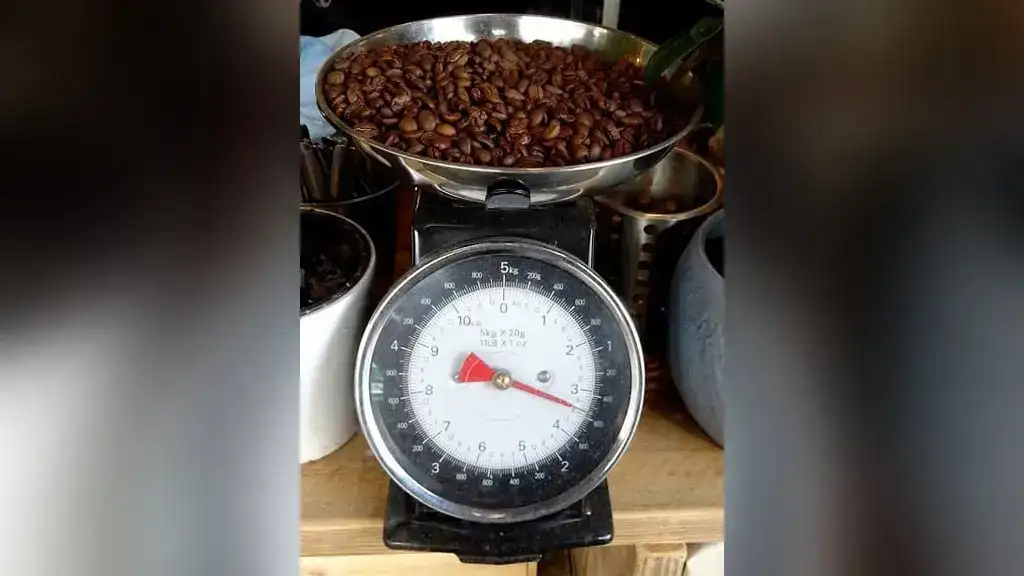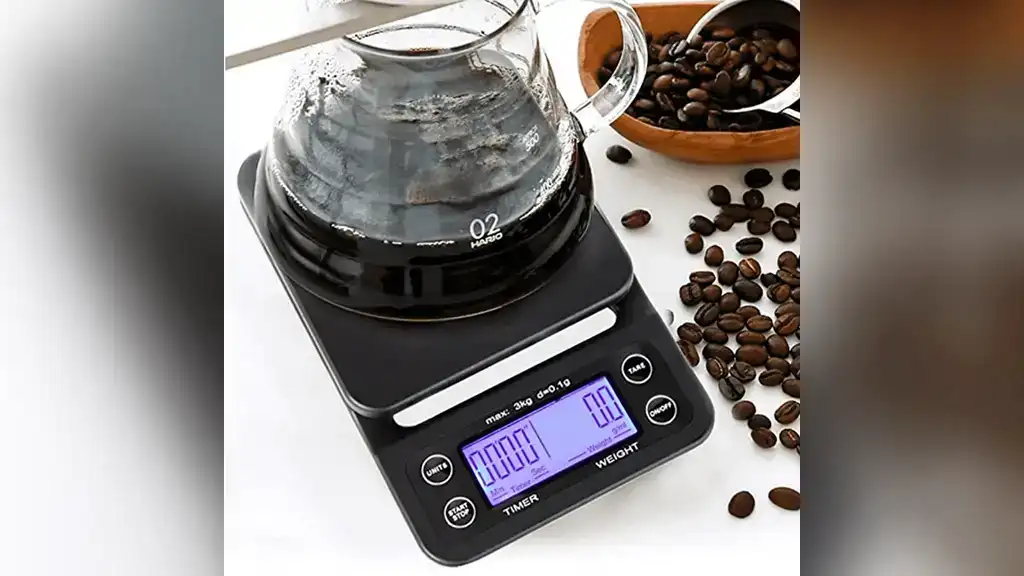Are you ready to elevate your coffee brewing game?
Discover the art of using a coffee scale for precise measurements and perfect brews. In this article, we’ll guide you through the steps of setting up your coffee scale, mastering measurements, and incorporating timing for the ultimate coffee experience.
Get ready to explore specialized brewing techniques and learn how to maintain and troubleshoot your coffee scale.
Take your coffee to new heights with these innovative tips and techniques.
Setting Up Coffee Scale
[youtube]https://youtu.be/kIZ9s2lBekI[/youtube]
To get started with your coffee scale, the first step is to assemble and power it up. Place the scale on a stable surface and ensure it’s properly connected to a power source.
Once the scale is powered on, take a moment to familiarize yourself with its interface, including the display, units of measurement, and primary functions. This will help you navigate the scale with ease and achieve accurate and consistent measurements for your coffee brewing.
Assembling and Powering the Coffee Scale
Place the coffee scale on a flat surface and power it up by inserting the batteries. Ensure that the scale is stable and level, as this will provide accurate measurements.
Once the batteries are in, turn on the scale using the power button. You should see the display light up, indicating that the scale is ready for use. If you encounter any issues during the starting up process, refer to the troubleshooting section in the user manual for guidance.
It’s important to regularly clean and maintain your coffee scale to ensure its optimal performance. This includes wiping it down with a damp cloth and avoiding spills or moisture damage.
Understanding the Interface
Once you have powered up your coffee scale, take a moment to familiarize yourself with its display, units, and primary functions. This will ensure that you can make precise measurements and achieve optimal results during your pour-over process.
Here are some key familiarization techniques to get you started:
- Display: The coffee scale’s display will show you the weight of your coffee grounds or liquid in either grams (g) or ounces (oz). Familiarize yourself with the display layout and ensure that it’s easy to read.
- Units: Make sure you understand how to switch between grams and ounces on your coffee scale. This will allow you to use the unit that’s most convenient for your brewing method.
- Accurate Taring: Taring is the process of resetting the scale to zero after placing a container on it. Learn how to accurately tare your coffee scale to ensure precise measurements.
- Integrated Timers: Some coffee scales come with integrated timers. Familiarize yourself with how to use this feature to keep track of your brew time for optimal results.
While mastering units on your coffee scale, you might find it beneficial to decode the intricacies of weight units. Additionally, if you’re contemplating the differences between general kitchen and coffee-specific scales, our detailed comparison can offer clarity.
Mastering Measurements
Now, let’s delve into the art of using a coffee scale for precise coffee and water measurements. Mastering the measurements is crucial for achieving consistent and flavorful brews.
While precision is key, have you ever pondered the accuracy of visual estimation against scale measurements? It’s an intriguing comparison. And for those who love brewing on their travels, discover the best scales designed for travelers.
In this section, we’ll familiarize you with three key points:
- Weighing coffee beans accurately
Accurate measurement of coffee beans is essential for achieving the desired strength and flavor in your brew. Using a coffee scale allows you to measure the exact amount of coffee needed, ensuring consistency in each cup.
- Understanding the importance of the tare function
The tare function on a coffee scale is a useful feature that allows you to reset the scale to zero after placing a container on it. This enables you to measure the precise weight of the coffee without including the weight of the container.
- Perfecting water weight for pour overs
In pour over brewing methods, the ratio of coffee to water plays a crucial role in determining the taste and strength of your brew. Using a coffee scale to measure the water weight ensures that you maintain consistency in the ratio and ultimately achieve the desired flavor profile.
Weighing Coffee Beans
To achieve consistent brews, you should start by becoming familiar with using a coffee scale for accurately measuring your coffee beans. Here are some techniques and tips to help you master the art of weighing coffee beans:
- Calibrate your scale: Before you start measuring, make sure your scale is properly calibrated for accurate readings. This will ensure precise measurements every time.
- Tare your scale: Place your empty container or coffee filter on the scale and press the tare button to zero out the weight. This way, you can measure just the coffee beans without including the weight of the container.
- Use the right unit of measurement: Most coffee scales allow you to switch between grams and ounces. It’s recommended to use grams for more precise measurements.
- Be consistent with your measurements: Use the same weight of coffee beans for each brew to achieve consistent results. This will help you fine-tune your brewing process and dial in the optimal results.
The Art of Taring
Make sure you place your brewing vessel on the coffee scale and press the tare button to zero out the weight before measuring your coffee and water.
Did you know there are various types of coffee scales tailored for different brewing needs? From compact to feature-rich, find the one that aligns with your coffee rituals.
The tare function is an essential feature of coffee scales that allows for accurate and precise measurements. By taring, you eliminate the weight of the brewing vessel, ensuring that only the coffee or water is measured.
This technique is crucial for achieving consistency in your brews. The benefits of taring include improved accuracy, as it eliminates any errors caused by the weight of the vessel. To achieve taring accuracy, ensure that the vessel is centered on the scale and that the scale is on a stable surface.
If you encounter any taring troubleshooting issues, such as the scale not registering the tare or displaying an incorrect weight, try adjusting the position of the vessel or restarting the scale.
While taring is the most commonly used method, there are alternative techniques like measuring the weight separately and subtracting it, but these may be less convenient and less precise.
Perfecting Water Weight for Pour Overs
You can achieve the optimal pour-over by familiarizing yourself with how to use a coffee scale to manage water weight effectively. Here are some expert tips to help you perfect your water weight measurements:
- Coffee Scale Calibration: Before you start, make sure your scale is properly calibrated. This ensures accurate measurements and consistent results.
- Measuring Water Accurately: Use your coffee scale to measure the exact amount of water needed for your pour-over. Precision is key to achieving the perfect brew.
- Adjusting Grind Size: Experiment with different grind sizes to find the one that works best for your pour-over. Finer grinds require less water, while coarser grinds may need more.
- Experimenting with Brew Ratios: Play around with different coffee-to-water ratios to find the one that suits your taste preferences. A good starting point is a 1:15 ratio (1 gram of coffee to 15 grams of water).
Incorporating Time in the Brew
When it comes to brewing the perfect cup of coffee, timing is everything.
Using a coffee scale with built-in timers allows you to monitor the brew time with precision.
Utilizing Coffee Scale with Built-in Timers
Start by setting the timer on your coffee scale to the desired brew time. Utilizing a coffee scale with a built-in timer can greatly enhance your coffee brewing experience. Here are four key benefits of using the integrated timer:
- Brew Time Management: The timer allows you to precisely control the duration of your brew, ensuring consistency and optimal extraction.
- Timer Utilization: With the timer on your coffee scale, you can focus on other tasks while it counts down, without the need for a separate timer or constantly checking the clock.
- Monitoring Brew Process: The integrated timer enables you to monitor the progress of your brew, giving you real-time feedback on the elapsed time.
- Tracking Brewing Time: By tracking the brewing time, you can experiment and adjust variables such as grind size, water temperature, and brewing methods to achieve the perfect cup of coffee.
The importance of brew time can’t be overstated, as it directly affects the flavor and strength of your coffee. So, make the most of your coffee scale’s timer feature to elevate your brewing skills and enjoy a consistently delicious cup of coffee.
Special Brews: Beyond the Basics
Now it’s time to elevate your coffee brewing game with specialized techniques using a coffee scale.
If you’re a fan of cold brew or iced coffee, a coffee scale can help you achieve the perfect ratios for a refreshing and flavorful drink.
With precise measurements and tips tailored specifically for cold coffee preparations, you’ll be able to craft a cold brew or iced coffee that will impress even the most discerning coffee connoisseurs.
Crafting Cold Brew and Iced Coffee
To achieve the perfect cold brew or iced coffee, consider using a coffee scale for precise measurements and enhanced flavor. Here are some tips and ratios to help you craft a delicious cold coffee experience:
- Brewing Techniques: Experiment with different brewing techniques like immersion or slow drip to find your preferred method for cold brew or iced coffee.
- Cold Brew Tips: Use a coffee scale to measure the right coffee-to-water ratio. Start with a 1:8 ratio (1 part coffee to 8 parts water) and adjust to taste. Steep the coffee grounds in cold water for 12-24 hours for a smooth and less acidic brew.
- Coffee Measurements: Accurate measurements are crucial for consistency. Use the taring function on your coffee scale to zero out the weight of your container before adding coffee and water.
- Pour Over Water Weight: When making iced coffee using the pour-over method, aim for a 1:15 coffee-to-water ratio (1 part coffee to 15 parts water). Use your coffee scale to measure the water weight as you pour it over the coffee grounds.
Maintenance and Troubleshooting
To ensure the longevity and accuracy of your coffee scale, proper maintenance is crucial. Regular cleaning and calibration are essential practices for optimal scale performance.
Maintaining your coffee scale goes beyond just cleaning. Dive into these essential maintenance hacks tailored for coffee enthusiasts. And when considering a new purchase, our checklist of must-have features can guide your decision.
Additionally, it’s important to be equipped with troubleshooting solutions to address common issues that may arise with your coffee scale.
Ensuring Long-Term Accuracy
Keep your coffee scale performing at its best by regularly cleaning and calibrating it for optimal accuracy and longevity. Maintaining your coffee scale is crucial to ensure its accuracy and reliability over time. Here are some tips to help you maintain your coffee scale:
Cleaning Techniques:
- Use a soft, damp cloth to wipe down the surface of the scale.
- Avoid using harsh chemicals or abrasive materials that could damage the scale.
- Clean the weighing platform regularly to remove any coffee grounds or residue.
Calibration Methods:
- Follow the manufacturer’s instructions for calibrating your specific coffee scale model.
- Use calibration weights or known weights to verify the accuracy of your scale.
- Calibrate your scale regularly to compensate for any drift or changes in accuracy.
Maintenance Schedule:
- Create a schedule to clean and calibrate your coffee scale at regular intervals.
- Consider cleaning it after every use and calibrating it monthly or as recommended by the manufacturer.
Troubleshooting Tips:
- If you encounter any issues with your coffee scale, refer to the manufacturer’s troubleshooting guide.
- Check for loose connections or damaged parts that may affect the scale’s performance.
- If the problem persists, contact the manufacturer or seek professional assistance.
Addressing Common Issues
If you’re experiencing any problems with your coffee scale, here are some solutions and steps to tackle common issues and ensure the longevity and accuracy of your scale.
One common troubleshooting issue is inaccurate measurements. To address this, make sure your scale is on a stable surface and not affected by vibrations. Additionally, calibrate your scale regularly to maintain its accuracy.
Another issue is taring techniques. If the tare function isn’t working properly, try resetting the scale or using a different container.
For pour over water weight, ensure that the scale can handle the weight of water and that it has a large enough platform.
Lastly, consider the benefits of an integrated timer, which can help you achieve consistent brew times and improve your coffee brewing experience.
Elevating the Coffee Experience
To further enhance and integrate the use of your coffee scale, there are a few key tips and techniques you should know.
First, prioritize safety and care by following essential practices to maintain the durability and accuracy of your scale.
Additionally, consider integrating technology into your brewing process by exploring the use of smart devices and apps that can enhance your coffee experience even further.
Safety and Care Best Practices
Ensure that you regularly clean and calibrate your coffee scale to maintain its accuracy and longevity. Here are some essential practices to help you maintain the safety and durability of your scale:
Maintenance Tips:
- Regularly inspect your scale for any signs of wear and tear.
- Clean it with a soft cloth and mild detergent, ensuring that no water enters the internal components.
Scale Calibration:
- Calibrate your coffee scale regularly to ensure accurate measurements.
- Follow the manufacturer’s instructions or use calibration weights to adjust the scale’s readings.
Cleaning Techniques:
- Avoid using harsh chemicals or abrasive materials when cleaning your scale.
- Instead, use a damp cloth or a mixture of water and mild detergent to gently wipe the surface.
Given the proximity of liquids during brewing, have you considered the benefits of splash-proof coffee scales? These waterproof options ensure longevity even with accidental spills. And if timing is crucial for your brews, explore scales that come with integrated timers, a must-have for the modern brewer.
Troubleshooting Guide:
- Familiarize yourself with the troubleshooting guide provided by the manufacturer.
- This will help you identify and resolve any issues that may arise with your coffee scale.
Integrating Technology
Enhance your coffee brewing experience by exploring the merger of modern technology with traditional brewing using smart devices and apps. The integration of smart devices and brewing technology has revolutionized the way we make coffee, allowing for a more precise and efficient brewing process.
While digital scales and smart devices dominate, there’s a charm in going classic. Discover the precision and aesthetics of analog coffee scales. For those who prefer modern precision, digital coffee scales offer unparalleled accuracy.
One of the key components of this integration is the smart scale. By using a smart scale, you can accurately measure the weight of your coffee beans and water, ensuring a consistent and flavorful brew every time.
These smart scales often come with their own dedicated apps, which provide additional features and functionalities such as timers, brewing guides, and recipe storage.
The benefits of using a smart scale in modern coffee brewing are numerous, from improved accuracy to increased convenience. So, why not take advantage of this technology and elevate your coffee experience to the next level?
Conclusion
In conclusion, mastering the use of a coffee scale is essential for achieving precise and optimal coffee brewing results.
By setting up the scale correctly, mastering measurements, incorporating timing, exploring specialized brewing techniques, and maintaining it properly, you can elevate your coffee experience to new heights.
With the help of a coffee scale, you can ensure accuracy in every aspect of the brewing process and enhance the flavors and aromas of your favorite brews.

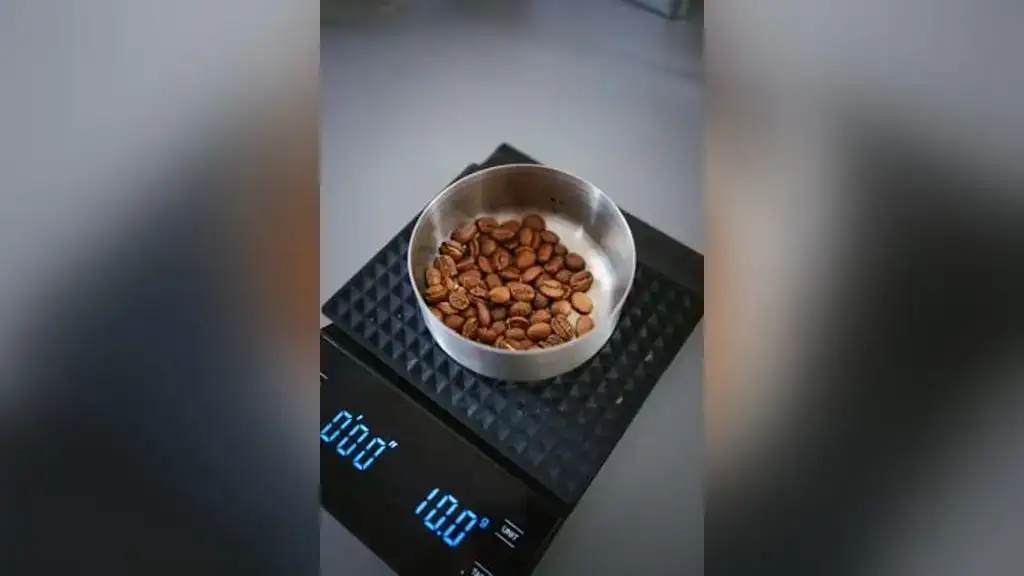




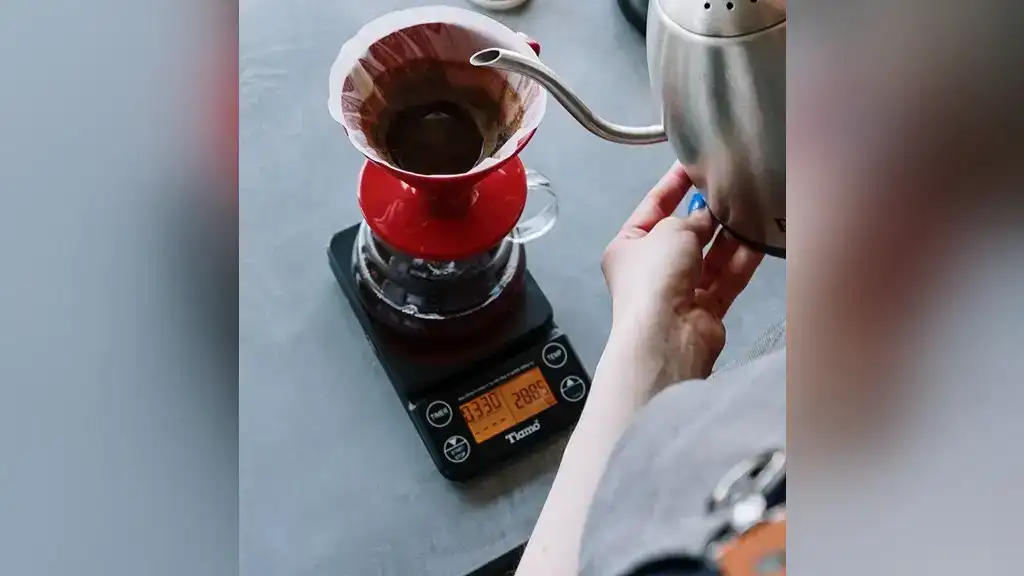


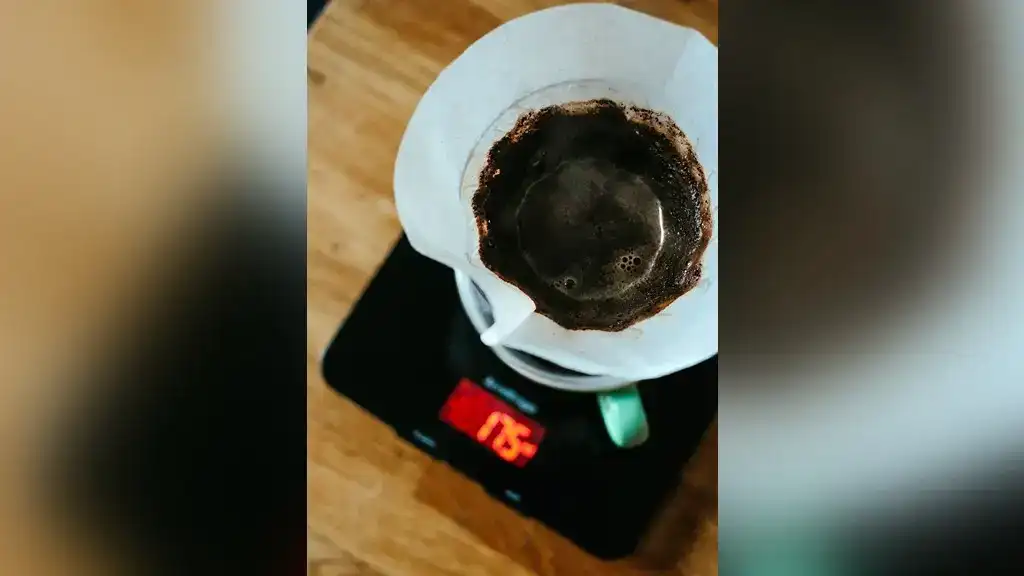
![Best Coffee Scales ([year]) You Shouldn't Miss! Best-Coffee-Scales-You-Shouldnt-Miss-1](https://coffeescan.com/wp-content/uploads/Best-Coffee-Scales-You-Shouldnt-Miss-1.webp)
